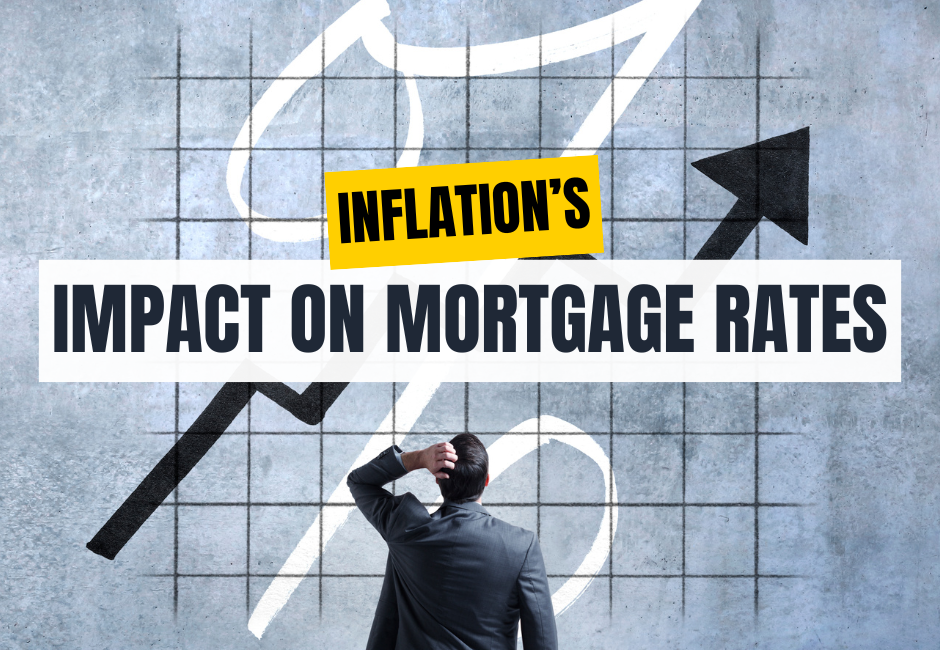
The Role of Inflation in Shaping Mortgage Rates: What Australian Borrowers Need to Know
Inflation is a powerful force in the economy, influencing everything from the price of groceries to the cost of borrowing. For Australian homeowners and buyers, understanding how inflation affects mortgage rates is crucial — especially in today’s shifting economic landscape.
In this guide, we unpack the connection between inflation and mortgage rates, explore its impact on borrowers, and share practical strategies to help you navigate rising costs with confidence.
What Is Inflation, and How Does It Affect Mortgage Rates?
Understanding Inflation
Inflation measures the rate at which prices for goods and services rise over time, reducing the purchasing power of money. While moderate inflation is considered healthy for the economy, excessive inflation can disrupt financial markets — including the housing and lending sectors.
The Link Between Inflation and Interest Rates
Central banks, like the Reserve Bank of Australia (RBA), use interest rates as a tool to manage inflation. The RBA adjusts the official cash rate, which then influences the rates offered by lenders on mortgages and other loans.
- Variable mortgage rates move in response to changes in the cash rate, directly affecting monthly repayments.
- Fixed mortgage rates reflect expectations about future inflation and market conditions but remain locked in during the fixed term.
In short:
- Rising inflation → the RBA raises the cash rate → mortgage rates increase.
- Falling inflation → the RBA cuts the cash rate → mortgage rates decrease.
A Look Back: Inflation and Mortgage Rates in Australia
1980s: High Inflation, Soaring Rates
The 1980s were marked by double-digit inflation, driven by global energy crises and local economic pressures. Mortgage rates surged to nearly 17–18%, straining household budgets and cooling the housing market.
2000s: Stability Returns
By the early 2000s, inflation stabilised within the RBA’s 2–3% target, and mortgage rates settled into more manageable levels. This supported strong property market growth, with homeownership becoming more accessible.
2020s: Pandemic, Recovery, and Inflation Surge
The COVID-19 pandemic initially pushed inflation lower, prompting the RBA to slash the cash rate to a historic 0.10%. But as the economy rebounded, supply chain disruptions and energy price hikes drove inflation above 7% in 2022. In response, the RBA rapidly raised rates, pushing mortgage rates sharply higher and pressuring households.
How Inflation Directly Impacts Borrowers
- Higher Mortgage Repayments
When inflation spikes and the RBA hikes rates, variable-rate borrowers face immediate repayment increases.
Example:
- Loan: AUD 500,000
- Rate increase: from 4% to 5%
- Monthly increase: ~AUD 300
- Reduced Borrowing Power
Higher interest rates lower your maximum borrowing capacity, as lenders stress-test your ability to repay under higher-rate conditions. - Fixed-Rate Loan Challenges
Fixed-rate borrowers are insulated during their fixed term but risk “rate shock” when the loan rolls over to a higher variable rate. - Cost of Living Pressure
Rising inflation increases everyday expenses (groceries, fuel, utilities), squeezing household budgets alongside mortgage costs.
Inflation’s Broader Impact on the Housing Market
- Property Prices: Rising rates dampen buyer demand, slowing price growth or triggering price corrections.
- Investment Yields: Higher mortgage costs can erode rental returns unless rents increase proportionally.
- Refinancing Activity: As variable rates rise, borrowers often explore refinancing to secure better rates or improved terms.
How Borrowers Can Navigate Rising Rates
- Consider Locking in a Fixed Rate
If inflation and rate hikes are expected to continue, fixing your rate can protect you from repayment increases and help you budget confidently. - Build a Financial Buffer
Use savings or allocate extra funds into an offset account to create a cushion for higher repayments. - Review Your Loan Features
Loans with offset accounts or redraw facilities can help reduce interest and increase flexibility during inflationary periods. - Explore Refinancing
Compare lenders to see if you can switch to a more competitive rate. Mortgage brokers can help identify suitable options. - Monitor Economic Trends
Keep an eye on RBA announcements, inflation reports, and economic forecasts to make proactive financial decisions. - Consider a Split Loan
A split loan — combining fixed and variable components — balances stability with flexibility, providing a hedge against market uncertainty.
Real-World Example: Inflation’s Impact
James and Emily, Sydney homeowners
- Loan: AUD 600,000, variable rate at 3.5% in 2021
- Rate in mid-2023: 5.5%
- Monthly repayment jump: AUD 2,694 → AUD 3,406 (AUD 712 increase)
Their strategy:
- Refinanced to a lender offering 4.8%, reducing their repayment jump to AUD 560/month
- Adjusted household spending and boosted offset savings
How the RBA Uses Rates to Tame Inflation
The RBA targets inflation of 2–3%. When inflation exceeds this band, it raises the cash rate to:
- Slow consumer spending
- Cool housing demand
- Encourage saving
- Prevent the economy from overheating
For borrowers, this translates to higher mortgage rates — but it also aims to stabilise the broader economy.
What’s Ahead for Australian Borrowers?
Short-Term Outlook
While inflation remains elevated, economists expect it to moderate over the next 12–24 months, though borrowers may face additional rate hikes in the near term.
Long-Term Outlook
Once inflation cools, mortgage rates are likely to settle into a more stable range, similar to pre-pandemic levels — but the ultra-low rates of recent years are unlikely to return soon.
Practical Tips for Managing Your Mortgage
- Budget cautiously, factoring in possible rate increases
- Make extra repayments now to lower your balance before future hikes
- Explore side income or investment opportunities to strengthen your finances
- Seek guidance from a mortgage broker or financial adviser
Final Takeaway
Inflation is a central player in the mortgage landscape, shaping interest rates, repayment costs, and borrowing power. For Australian borrowers, understanding this relationship is key to navigating today’s economic conditions and building a resilient mortgage strategy.
By staying informed, exploring refinancing options, and planning proactively, you can safeguard your financial future — no matter how inflation and interest rates evolve.




